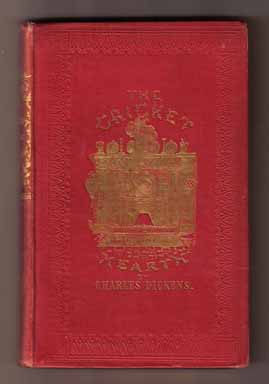Charles Dickens has inspired generations of writers, readers, and book lovers. Born in 1812, Dickens earned the reputation of preeminent novelist of the Victorian era. His contributions to literature mean that Charles Dickens books remain incredibly appealing to rare book collectors. Bet you didnt know these tidbits about Charles Dickens:
- Dickens novels and stories first appeared in monthly or serial format. Most authors of his day would write entire novels, and publish sections at a time. Dickens, on the other hand, wrote each episode as he went along.
- His novels and short stories are so popular that they have never gone out of print.
- Dickens father, John, was a notorious spendthrift who eventually ended up in debtors prison. The rest of the family soon joined him--with the exception of 12-year-old Charles, who went to live with an old family friend.
- Dickens was eventually forced to leave school and take a job in a blacking factory. He worked ten-hour days in often cruel conditions. Dickens experience there formed the foundation of Dickens opinions on labor and socioeconomic conditions.
- For almost four years, Dickens served as a court reporter. That inside look at the court system informed novels like Dombey and Son. It also provided Dickens contemporaries with an enlightening glimpse at how Englands court system really worked.
- Dickens met his first love, Maria Beadnell, in 1830. Her parents disapproved of Dickens and sent Maria to boarding school in Paris. Most scholars agree that Maria was the inspiration behind Dora in David Copperfield.
- When Dickens published his first work, Sketches by Boz, he certainly chose an odd pseudonym. Dickens had nicknamed his brother Moses, which when pronounced through the nose, sounds like Boses. Boz was the shortened version of this nickname.
- For years, Dickens full pseudonym was The Inimitable Boz. Eventually he dropped Boz and was known simply as The Inimitable.
- Dickens, an avid abolitionist, made his first visit to the US in 1842. He carefully documented the atrocities of slavery. Dickens also visited President John Tyler.
- In May 1846, Dickens undertook to establish a home for fallen women at the behest of Angela Burdett Coutts. He became extremely active in daily operations, and even interviewed potential residents personally.
- In 1858, Dickens separated from his wife, Catherine, with whom he had ten children. He embarked on an ambitious reading tour, sometimes doing both matinee and evening performances.
- Dickens burned virtually all his personal correspondence in September 1860, ostensibly to destroy evidence of his affair with Ellen Ternan. Ternan received an annuity from Dickens when he died, and it is hypothesized that the two had a child who died in infancy.
- Dickens exercised an odd obsession with the paranormal. He was one of the early members of The Ghost Club, an organization devoted to investigation of paranormal activity.
Collectors of Charles Dickens rely on the definitive bibliography compiled by John C. Eckel in 1932.









